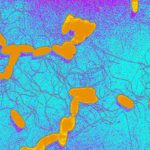Lien vers Pubmed [PMID] – 20489072
AJR Am J Roentgenol 2010 Jun;194(6):W521-6
OBJECTIVE: The objective of our study was to prospectively evaluate macrophage imaging using ultrasmall superparamagnetic iron oxide (USPIO)-enhanced MRI to depict bacterial knee infection in an experimental rabbit model.
SUBJECTS AND METHODS: Unilateral knee infection was induced by intraarticular injection of Staphylococcus aureus in eight rabbits. The contralateral knees were used as internal controls. After a mean interval of 3 days, two MRI sessions (3-T MRI) were performed before and 24 hours after IV administration of USPIO. The protocol included T1-weighted spin-echo, T2-weighted spin-echo, and T2*-weighted gradient-echo images. A gadolinium-enhanced T1-weighted sequence was also performed in the first session to optimize detection of synovial hyperplasia. MR data were analyzed qualitatively and quantitatively and compared with histopathologic findings (H and E stain and Perls Prussian blue stain). Signal-to-noise ratio changes after USPIO administration were compared using Wilcoxon’s signed rank test.
RESULTS: All inoculated knees presented infectious synovitis with intense infiltration of iron-loaded macrophages. In these infected knees, signal loss was determined visually and quantitatively on T1-weighted (p < 0.01), T2-weighted (p < 0.01), and T2*-weighted images (p < 0.01) 24 hours after USPIO administration, reflecting the presence of USPIO-loaded macrophages in the synovium. In contrast, no significant MR signal changes were observed in the control knees (p = 0.07-0.48), which presented a normal synovium without infiltration of iron-loaded macrophages.
CONCLUSION: Macrophage imaging using USPIO-enhanced MRI can depict infectious knee synovitis.

